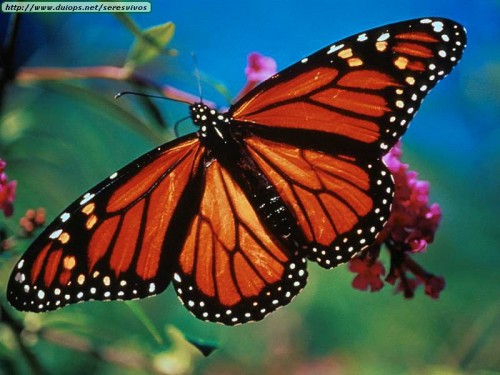Welcome to the Butterflies Facts & Preservation Learning Section

BUTTERFLIES - are mainly day-flying insect of the order Lepidoptera, which includes the butterflies and moths. Like other holometabolous insects, the butterfly's life cycle consists of four parts: egg, larva, pupa and adult. Most species are diurnal. Butterflies have large, often brightly coloured wings, and conspicuous, fluttering flight. Butterflies comprise the true butterflies (superfamily Papilionoidea), the skippers (superfamily Hesperioidea) and the moth-butterflies (superfamily Hedyloidea). All the many other families within the Lepidoptera are referred to as moths. The earliest known butterfly fossils date to the mid Eocene epoch, between 40–50 million years ago.
Butterflies exhibit polymorphism, mimicry and aposematism. Some, like the Monarch, will migrate over long distances. Some butterflies have evolved symbiotic and parasitic relationships with social insects such as ants. Some species are pests because in their larval stages they can damage domestic crops or trees; however, some species are agents of pollination of some plants, and caterpillars of a few butterflies (e.g., Harvesters) eat harmful insects.
Many butterflies migrate over long distances. Particularly famous migrations are those of the Monarch butterfly from Mexico to northern USA and southern Canada, a distance of about 4000 to 4800 km (2500–3000 miles). Other well known migratory species include the Painted Lady and several of the Danaine butterflies. Spectacular and large scale migrations associated with the Monsoons are seen in peninsular India. Migrations have been studied in more recent times using wing tags and also using stable hydrogen isotopes.
Butterflies have been shown to navigate using time compensated sun compasses. They can see polarized light and therefore orient even in cloudy conditions. The polarized light in the region close to the ultraviolet spectrum is suggested to be particularly important. It is suggested that most migratory butterflies are those that belong to semi-arid areas where breeding seasons are short. The life-histories of their host plants also influence the strategies of the butterflies.
We ask you to please donate to the Big MaMa Earth Learning Academy an environmental solution based non-profit. Your donations will be utilized for continuing education about “Butterflies” and other important issues.
Please click the Icon’s below to view “Video’s” & “Photos”, review “Scientific Information” and be part of the “Solution”. “Your Future is NOW!”







